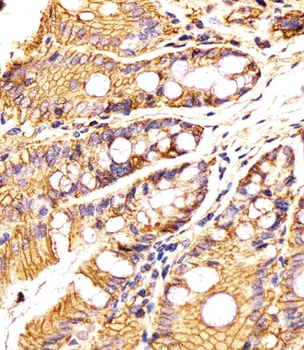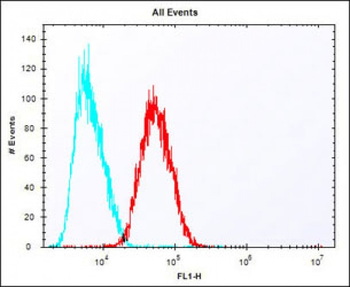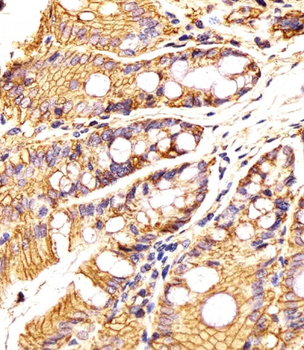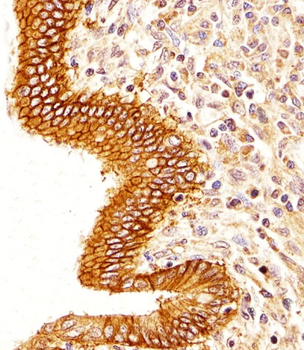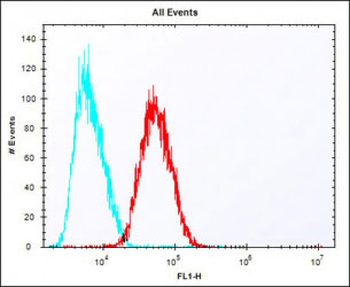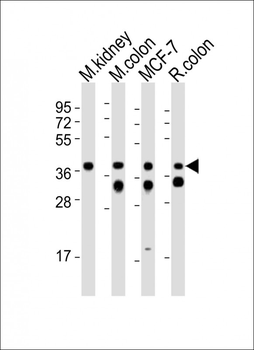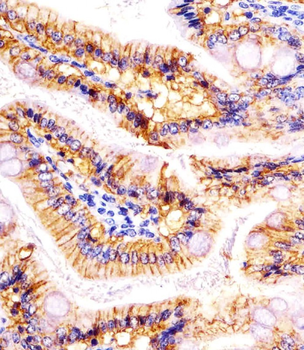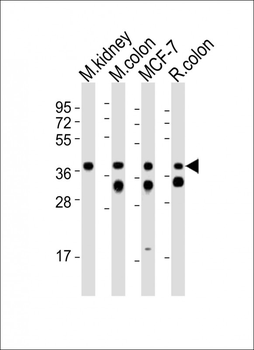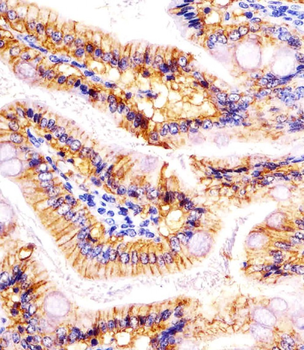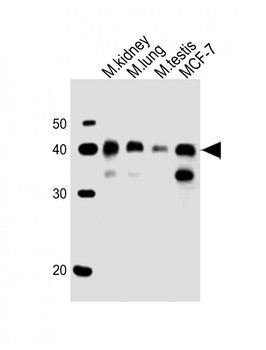You have no items in your shopping cart.
(Mouse) Epcam Antibody (C-term)
Catalog Number: orb1788009
| Catalog Number | orb1788009 |
|---|---|
| Category | Antibodies |
| Description | Purified Rabbit Polyclonal Antibody (Pab) |
| Species/Host | Rabbit |
| Clonality | Polyclonal |
| Tested applications | FC, IHC-P, WB |
| Reactivity | Mouse |
| Isotype | Rabbit IgG |
| Immunogen | 302-335 aa |
| Dilution range | WB: 1:1000, IHC-P: 1:25, IHC-P: 1:25, FC: 1:25 |
| Conjugation | Unconjugated |
| MW | 35019 Da |
| Target | This mouse Epcam antibody is generated from a rabbit immunized with a KLH conjugated synthetic peptide between 302-335 amino acids from the C-terminal region of mouse Epcam. |
| UniProt ID | Q99JW5 |
| Storage | Maintain refrigerated at 2-8°C for up to 2 weeks. For long term storage store at -20°C in small aliquots to prevent freeze-thaw cycles |
| Alternative names | Epithelial cell adhesion molecule, Ep-CAM, Epithel Read more... |
| Note | For research use only |
| Expiration Date | 12 months from date of receipt. |

Staining Epcam in Mouse colon tissue sections by Immunohistochemistry (IHC-P - paraformaldehyde-fixed, paraffin-embedded sections). Tissue was fixed with formaldehyde and blocked with 3% BSA for 0.5 hour at room temperature; antigen retrieval was by heat mediation with a citrate buffer (pH6). Samples were incubated with primary antibody (1/25) for 1 hours at 37°C. A undiluted biotinylated goat polyvalent antibody was used as the secondary antibody.
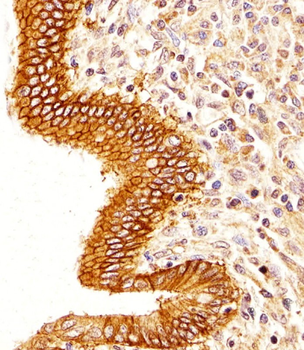
Staining Epcam in Human colorectal carcinoma tissue sections by Immunohistochemistry (IHC-P - paraformaldehyde-fixed, paraffin-embedded sections). Tissue was fixed with formaldehyde and blocked with 3% BSA for 0.5 hour at room temperature; antigen retrieval was by heat mediation with a citrate buffer (pH6). Samples were incubated with primary antibody (1/25) for 1 hours at 37°C. A undiluted biotinylated goat polyvalent antibody was used as the secondary antibody.
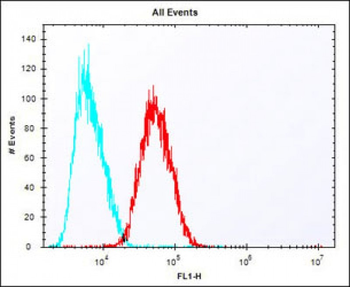
Overlay histogram showing HepG2 cells stained (red line). The cells were fixed with 2% paraformaldehyde (10 min) and then permeabilized with 90% methanol for 10 min. The cells were then icubated in 2% bovine serum albumin to block non-specific protein-protein interactions followed by the antibody (1:25 dilution) for 60 min at 37°C. The secondary antibody used was Alexa Fluor 488 goat anti-rabbit lgG (H+L) (1583138) at 1/400 dilution for 40 min at 37°C. Isotype control antibody (blue line) was rabbit IgG1 (1 μg/1x10^6 cells) used under the same conditions. Acquisition of >10000 events was performed.
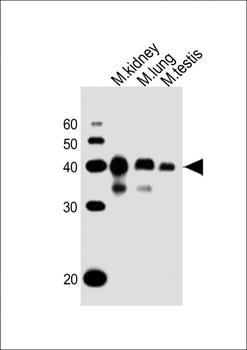
All lanes: Anti-Epcam Antibody (C-term) at 1:1000 dilution. Lane 1: mouse kidney lysates. Lane 2: mouse lung lysates. Lane 3: mouse testis lysates. Lysates/proteins at 20 µg per lane. Secondary Goat Anti-Rabbit IgG, (H+L), Peroxidase conjugated at 1/10000 dilution. Predicted band size: 35 kDa. Blocking/Dilution buffer: 5% NFDM/TBST.
(Mouse) Epcam Antibody (C-term) [orb1926651]
FC, IHC-P, WB
Rat
Mouse
Rabbit
Polyclonal
Unconjugated
400 μl(Mouse) Epcam Antibody (C-term) [orb1926423]
IHC-P, WB
Human, Mouse, Rat
Rabbit
Polyclonal
Unconjugated
400 μl(Mouse) Epcam Antibody (C-term) [orb306604]
IHC-P, WB
Human, Mouse, Rat
Rabbit
Polyclonal
Unconjugated
80 μl



